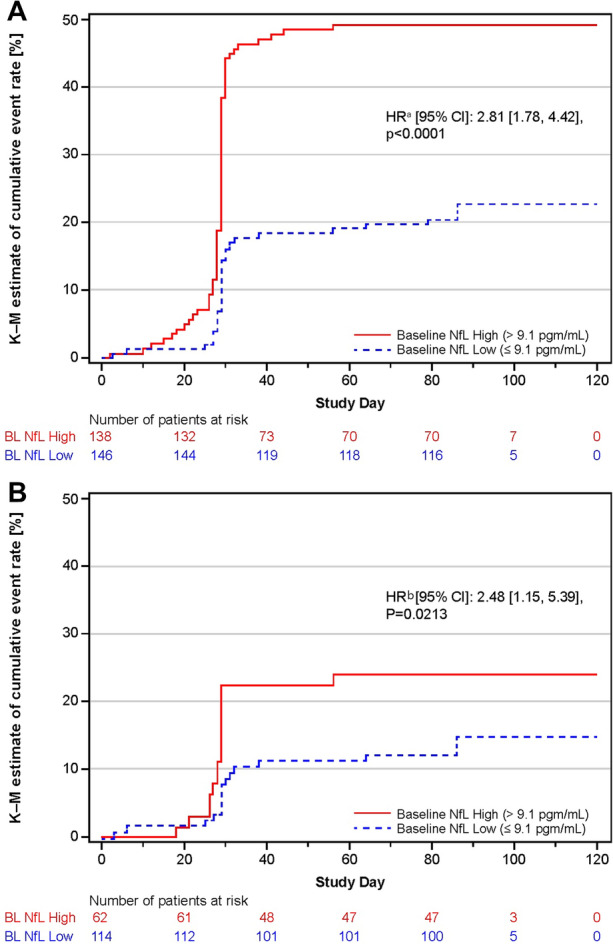Fig. 6.

Baseline sNfL level predicts risk of on-study disease activity: A All patients and B patients free of Gd + T1 lesions at baseline. The stepped lines show Kaplan-Meier estimates of the cumulative proportion of patients with either confirmed clinical relapses or Gd + T1 lesions by time (days). In the figure, the steep increase in the estimated proportion of patients with on-study confirmed clinical relapses or Gd + T1 lesions at day 28 was observed because day 28 is the day of the first-post baseline MRI scan, uncovering the proportion of patients with radiological disease activity. aThe Cox regression model included the baseline sNfL category as factor, age, baseline number of Gd + T1 lesions, baseline volume of T2 lesions, baseline EDSS, and number of clinical relapses in previous year as continuous covariates. bThe Cox regression model included baseline sNfL category as factor and age, baseline volume of T2 lesions, baseline EDSS and number of clinical relapses in the previous year as continuous covariates. Gd + gadolinium enhancing, HR hazard ratio, sNfL serum neurofilament light chain
